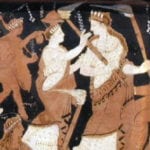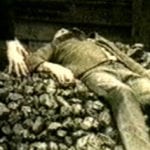 Miscellaneous
Miscellaneous  Miscellaneous
Miscellaneous  Our World
Our World 10 Green Practices That Actually Make a Difference
 Humans
Humans Ten Historic Men Who Deserve Way More Credit Than They Got
 Movies and TV
Movies and TV The 10 Most Heartwarming Moments in Pixar Films
 Travel
Travel Top 10 Religious Architectural Marvels
 Creepy
Creepy 10 Haunted Places in Alabama
 History
History Top 10 Tragic Facts about England’s 9 Days Queen
 Food
Food 10 Weird Foods Inspired by Your Favorite Movies
 Religion
Religion 10 Mind-Blowing Claims and Messages Hidden in the Bible Code
 Facts
Facts 10 Things You Never Knew about the History of Gambling
 Miscellaneous
Miscellaneous Ten Groundbreaking Tattoos with Fascinating Backstories
 Our World
Our World 10 Green Practices That Actually Make a Difference
 Humans
Humans Ten Historic Men Who Deserve Way More Credit Than They Got
Who's Behind Listverse?

Jamie Frater
Head Editor
Jamie founded Listverse due to an insatiable desire to share fascinating, obscure, and bizarre facts. He has been a guest speaker on numerous national radio and television stations and is a five time published author.
More About Us Movies and TV
Movies and TV The 10 Most Heartwarming Moments in Pixar Films
 Travel
Travel Top 10 Religious Architectural Marvels
 Creepy
Creepy 10 Haunted Places in Alabama
 History
History Top 10 Tragic Facts about England’s 9 Days Queen
 Food
Food 10 Weird Foods Inspired by Your Favorite Movies
 Religion
Religion 10 Mind-Blowing Claims and Messages Hidden in the Bible Code
 Facts
Facts 10 Things You Never Knew about the History of Gambling
10 Unsolved Mysteries From The Heat Of War
During times of conflict, chaos often reigns, and strange and unexplained events can occur. So it’s no surprise that quite a few historic mysteries have their origins in the midst of wars. The experts are still trying to figure out the entries on this list. In many cases, they never will.
10The Missing Soldier
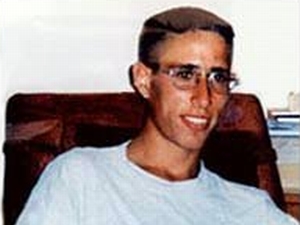
On August 17, 1997, a 20-year-old Israeli soldier named Guy Hever walked out of an artillery base in the Golan Heights. He had previously clashed with his superiors, and the military initially assumed that he would return to his parents’ house. He didn’t. Guy Hever was never seen again.
In the years that followed, multiple search operations by the police, the military, an army of volunteers, and even remote-control robots could not find any trace of the missing soldier. Even the rifle he took with him that day, which would not have biodegraded, was never found.
There were a few intriguing sightings. A psychologist reported seeing a soldier walking near the town of Katzrin just a few hours after Hever left his camp. Another witness claimed he had seen an Israeli soldier near the Israel-Syria border the same day. In 2005, a German traveler claimed to have encountered someone resembling Hever while being questioned by police in an Aleppo military compound.
Hever’s family have grasped at this last possibility, arguing that Hever could be a hostage in Syria. However, others have questioned why Syria would hold an ordinary Israeli infantryman in secret for almost two decades, without making any demands. Hever’s family have also strongly criticized the Israeli government, claiming the authorities have always seemed strangely uninterested in looking for their son. As of 2014, Guy Hever’s disappearance remains a complete mystery.
9The Death Of Dag Hammarskjold
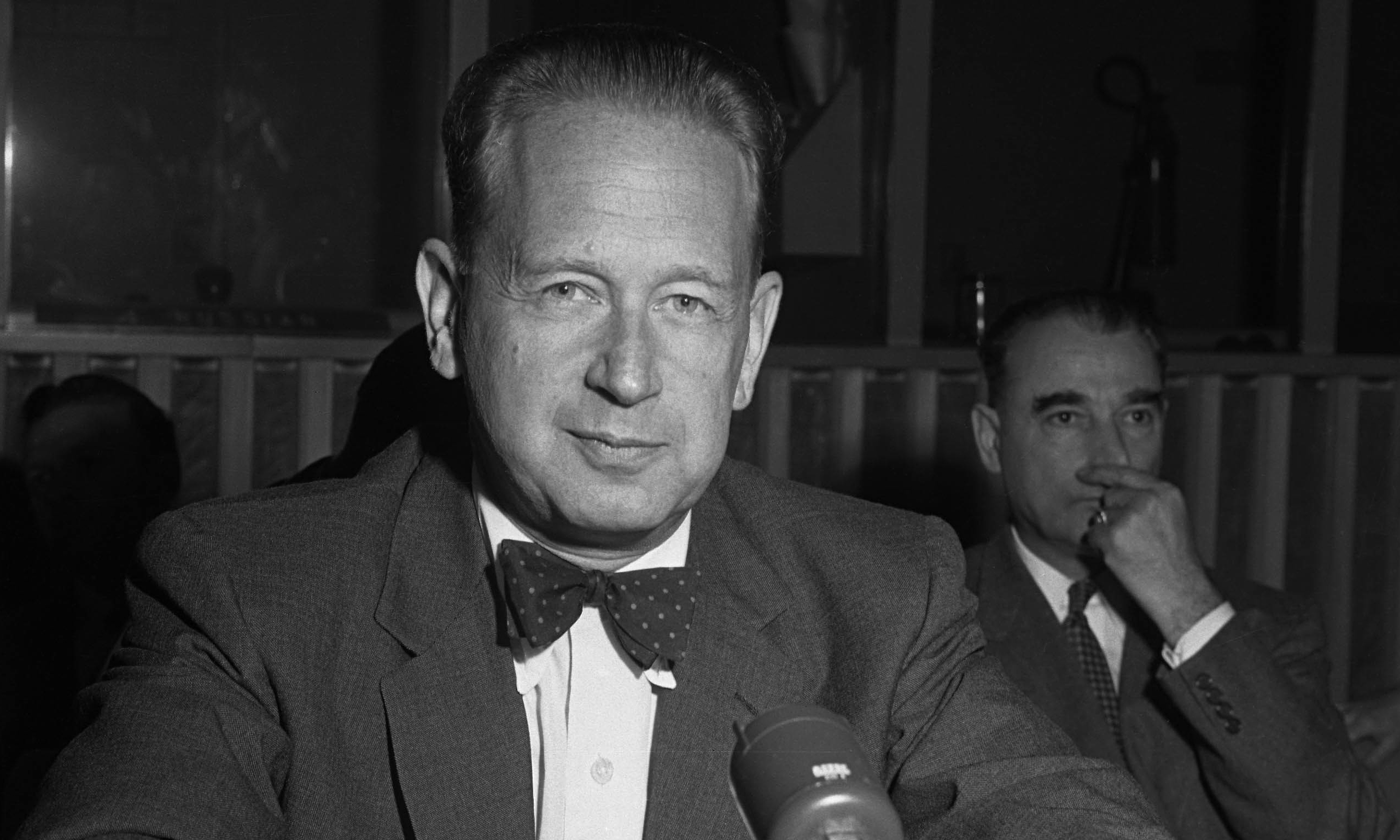
On September 17, 1961, a plane crashed in what is now Zambia, ending the life of UN Secretary General Dag Hammarskjold. Officially, the crash was a terrible accident. Unofficially, the incident has become one of the enduring mysteries of the Cold War.
It has long been rumored that the plane was shot down by powers opposed to Hammarskjold’s aggressive peacekeeping efforts in the Congo. A multitude of unanswered questions still surround the crash. It took 15 hours to locate the plane wreckage, even though it crashed just a few miles away from the airport, and Rhodesian officials were subsequently accused of delaying the search. Hammarskjold’s bodyguard, who briefly survived the crash, stated that there was an explosion of some sort on the plane. Eyewitnesses reported seeing bright flashes and sparks, with some even claiming to have seen a second plane shoot down Hammarskjold’s.
Hammarskjold had made enemies of the US, Britain, Belgium, and the Soviet Union, all of whom resented his support for the Congolese government. However, Hammarskjold’s popularity with the smaller countries of the UN General Assembly meant that his reelection as Secretary General was all but guaranteed.
In 2011, the publication of the book Who Killed Hammarskjold? restarted the conspiracy theories. The book included testimony from Commander Charles Southall, who claimed he had intercepted a conversation from a second plane. He heard an unknown pilot say: “I’ve hit it. There are flames. It’s going down. It’s crashing.”
The UN is still investigating the circumstances of Hammarskjold’s death.
8The Kinmel Camp Riot Deaths
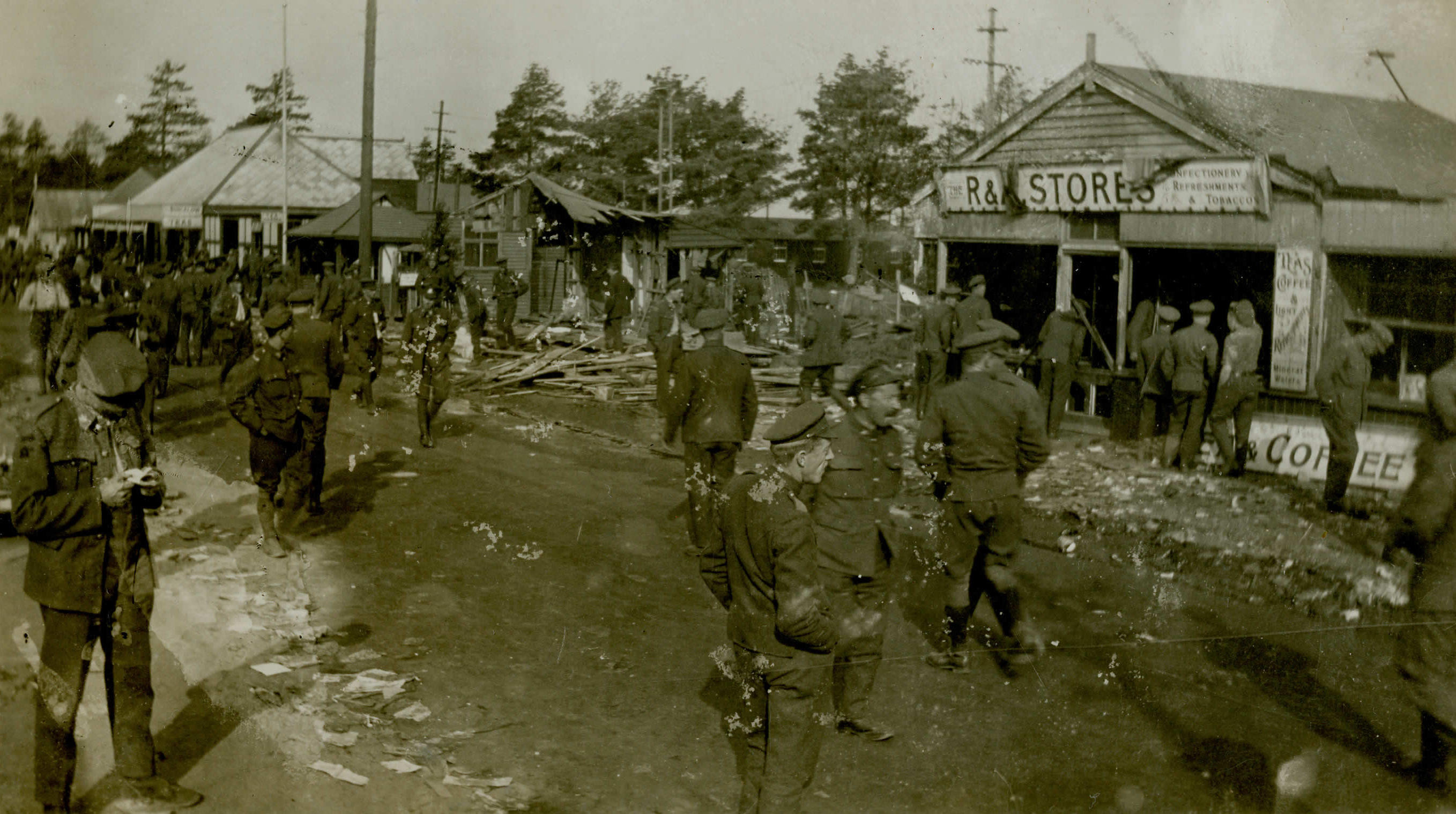
During World War I, 85 Canadian soldiers were buried in Bodelwyddan, Wales. Among those killed by the terrible Spanish flu pandemic that followed the war, there are five soldiers who died in the Kinmel Camp riots of March 1919. Just who killed them, or precisely how they died, remains unknown. The gravestone of one of the men, Corporal Joseph Young, is inscribed: “Someday, sometime, we’ll understand.”
The riots broke out on March 4, and lasted for two days. An estimated 17,000 Canadian troops were being held in the camp, waiting to return home. Over the cold winter months, as delays mounted and conditions in the camp deteriorated, tensions grew. When the soldiers discovered that the ships they were waiting for were being used to repatriate American soldiers who hadn’t even seen combat, a riot broke out.
Gangs of soldiers broke into their superiors’ quarters and looted local shops. They freed imprisoned soldiers and hoisted a red flag. After order was restored, the five bodies were discovered. The coroner’s report stated that they had been murdered by assailants unknown. A full investigation was never undertaken.
7Mass Graves In Poland

Radoslaw Gajc is a construction worker from the quiet Polish town of Malbork. In 2009, he and his coworkers were getting ready to start building a new hotel in the area. Then they discovered something that put the project on hold. Human remains—children’s remains—in a mass grave.
After the children’s bones, the workers began digging up adult skeletons. At least 1,800 different sets of remains had been found by the end of the year. All of the victims were dumped naked into the grave at some point toward the end of World War II. Their cause of death? Unclear.
It has been suggested that they may have died immediately after the war, during an outbreak of typhus, and were simply dumped in the mass grave because there was no other way to dispose of the bodies. However, bullet holes were found in some of the skulls. Malbork was known to have been the site of terrible violence at the end of the war, as the town’s German population fled the advancing Red Army. By the end of the war, the German population had vanished.
Previously, in 1996, the remains of 178 people were found on the Malbork Castle premises. In 2005, 123 more bodies were found in what used to be a war trench.
6The Mysterious Shipwreck
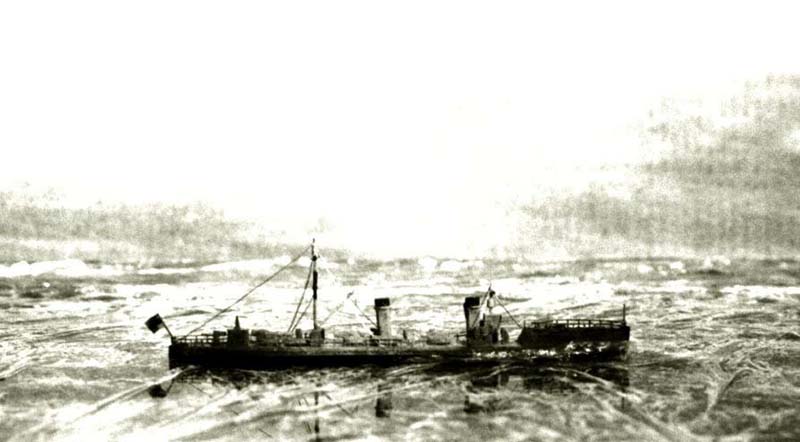
The German torpedo boat V81 saw action in the Battle of Jutland during World War I. In 1919, it was part of the German fleet scuttled at Scapa Flow. It was eventually raised, but ran aground in 1921. It was raised yet again, and sold for scrap in 1937. At least, that’s what the official records say.
However, in 1985, divers found a sunken torpedo boat on the seabed off Caithness. Only in 2006 did members of the Caithness Diving Club try to make a proper study of the wreck—and they became convinced that it was the V81. They took photographs of the wreck and sketched a turbine, gearbox, and brass fittings.
Another clue to the wreck’s origin was discovered in the form of a police officer’s handwritten note, describing a warship from Germany getting into difficulty on February 13, 1920.
But nothing regarding the warship could be found in newspapers of the time. It is possible that there was a media blackout to prevent anyone from trying to salvage the ship illegally. The true fate of the V81 remains a mystery.
5The Missing Private

Virginia native John M. Cain enlisted as a private in the 543rd Engineers Service Battalion in August 1918. He was discharged in July 1919, and reportedly passed away in November 1928. His mother, Adeline Howard, claimed he was buried in Lincoln Cemetery.
Adeline applied to the War Department to receive a headstone for her son, a request which was approved in 1929. According to a stamp on the application form, it was shipped on January 9, 1931. Oddly, it never seems to have arrived. In 2014, a picture was posted on Facebook depicting the forlorn headstone, resting against the side of a chimney in Halifax County. Locals indicated that it had been there for at least 20 years.
The gravestone is not the only strange mystery surrounding Private Cain. Nobody knows how he died or why he served less than a year in the military. Many websites on World War I don’t even make mention of the 543rd Engineers Service Battalion. Despite his mother’s claim, there is no record of Cain being buried in Lincoln Cemetery.
4The Deadly Double

On 22 November, 1941, the New Yorker magazine published two ads for a dice game called “The Deadly Double.” The ads were a little peculiar, but no one thought much of them at the time. The first, placed toward the front of the magazine, depicted two dice under the heading: “Achtung! Warning! Alerte!” One die displayed the numbers 0, 5, and 7. The other showed 12, 24, and the Roman numeral XX. The ad continued on page 86, with the same heading over a group of people in a bunker. The text described the game as the perfect entertainment while sheltering from an air raid. The whole thing was capped off with a stylized drawing of a double-headed eagle.
Two weeks later, Japan attacked Pearl Harbor, the United States entered the war, and the ad suddenly became of great interest to the FBI.
The FBI believed that the ad might have been placed by the Japanese or their allies as a warning to their American agents that an attack was imminent. The prominently displayed numbers 12 and 7 could have been a coded reference to the date of the attacks—December 7. It was assumed that the other numbers and the Roman numeral XX (or perhaps the symbol of the double-cross) were part of a secret code to identify the person who placed the advertisement.
The bigger advert on page 86 drew the most attention, as it also contained a drawing of what could have been the front parts of three bomber planes heading over the ocean toward a target. The picture included what looked like search lights and an explosion. The words “The Deadly Double” seemed to represent Nazi Germany and Japan and the eagle looked similar to Hitler’s Third Reich symbol.
The FBI’s investigation led them to the Monarch Trading Company of Chicago, who were apparently behind the advertisement. The company itself only existed for a short period, leading some to suggest it was a “dummy corporation.” The company official who had placed the advertisement, apparently after designing the plates himself, was reported to have died mysteriously just a couple of weeks later.
3The Kruger Millions

In the year 1900, the Anglo-Boer War was raging across South Africa, and Lord Alfred Milner was preparing an attack on Pretoria, the capital of the Boer Transvaal Republic.
The republic’s president, Paul Kruger, realized that Milner’s force was too strong to defeat and quietly started making plans to leave. On the night of June 4, Kruger and his cabinet secretly took a train to Machadodorp in the Lowveld. Their plan included setting up offices and living quarters in some of the train’s compartments and lying low until they could cross the border into Mozambique. They eventually traveled on to Europe.
It is believed that Kruger took a large stash of gold bars and coins with him on his trek to the Lowveld. He was just in time—Milner invaded Pretoria on June 5. An initial investigation found that at least £800,000 of gold had vanished from the capital. It was eventually determined that up to £1.5 million—a huge sum in those days—was missing.
It is thought that Kruger spent some of the gold during the war, and also took some of it with him to Europe. However, many people in South Africa fully believe that Kruger left some gold in the Lowveld—and many are still determined to find it. In 2001, there was much excitement when it was thought that some locals had found 4,000 gold coins, but this was never substantiated. The search for the missing gold still goes on, with many hopeful that they might just be the lucky ones to find the treasure.
2The Mysterious Souvenir
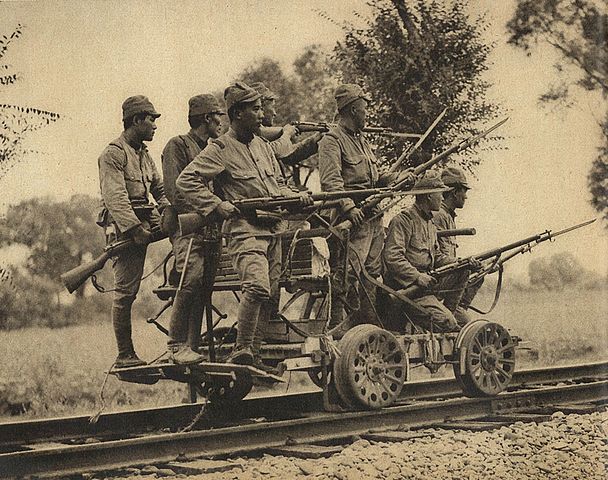
In August 1943, a fierce battle on the island of Bougainville, off the coast of New Guinea, left many soldiers dead. After the fighting was over, a US marine happened upon the body of a Japanese soldier and decided to search it to see if he could find any “souvenirs.” To his great surprise, he discovered a newspaper clipping and a photograph of an American girl. The clipping revealed that the girl was 18 years old, from St. Petersburg, Florida, and about the take part in a beauty pageant. Being from St. Petersburg himself, he took the clipping and photo with him when he left the island.
Two years later, a young girl by the name of Wanda Wilson was visited by a stranger at her parents’ home in St. Petersburg. At the time, Wanda had a job at Florida Power, a part-time modeling career, and was in love with a colleague.
Marine corporal Robert Goddard was about to throw a spanner in the works, producing the photograph he had found in the dead Japanese soldier’s pocket. Wanda gasped as she recognized herself in the picture, which had originally appeared in the St. Petersburg Times in March 1942. No one knew how the picture and clipping could have ended up in a Japanese soldier’s pocket on the other side of the world, a year and a half after it was published.
Even if the Japanese soldier did what Goddard did, and took the picture from an American soldier’s corpse, who was the American soldier? Wanda did not recognize the names or pictures of any American soldiers who died on the island.
1The Strange Case Of Pete Ellis
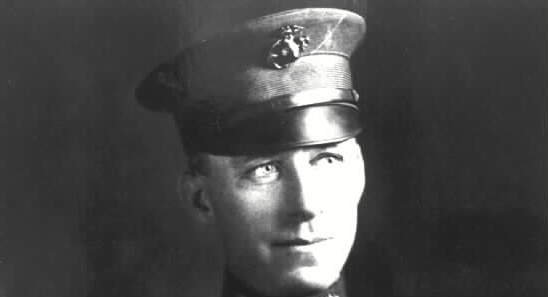
Lieutenant Colonel Pete Ellis predicted the attack on Pearl Harbor 20 years before it happened. Then he disappeared, never to be seen again.
In mid-July 1920, Ellis was stationed at Marine Corps headquarters in Washington. He didn’t make many friends, staying locked in his office behind a “No Admittance” sign. The guards on late-night duty recorded that the lights in the office were always on until late in the night. If anyone asked what he was doing, Ellis simply muttered something about a “special project.”
After almost a year, Ellis produced his “special project”—a 30,000-word document detailing a surprise attack on the US and the war that would ensue between Japan and the United States.
Ellis listed the various Pacific islands that Japan would infiltrate and attack, including Hawaii, the Philippines, Midway, Guam, and Wake. His counter-plan involved the US seizing the Marshall and Caroline islands as bases for a retaliatory strike into the Philippines. Ellis also listed the Mariana and Bonin Islands as necessary staging points for an attack on Japan itself.
Ellis even managed to predict the importance of airplanes to a Pacific war—and anticipated the development of the torpedo bomber, which would later be used to devastating effect in the attack on Pearl Harbor.
After a brief period of ill health, Ellis applied for 90 days of leave, saying that he wanted to visit Europe. Oddly, his request was immediately approved by the Secretary of the Navy himself. Even more oddly, Ellis called at the office of the Commandant of the Marine Corps before leaving. The Commandant’s secretary noticed that Ellis slipped him a sealed envelope before making a quick exit.
Ellis apparently never arrived in Europe. After 90 days, his leave was mysteriously renewed indefinitely. A year passed before anyone heard from him again. A close friend received strange cablegrams sent from hospitals in Australia and the Philippines. In Japan, a man identifying himself as Ellis received treatment for nephritis and alcohol poisoning.
On October 4, 1922, Ellis disappeared from his hospital bed in Yokohama, Japan. Several months later, reports emerged of an American named Ellis, who had died on the island of Koror, in what is now Palau. The reports also noted that the Japanese didn’t want foreigners in the region, and that they had been trying to prevent him from reaching certain restricted areas.
A pharmacist named Lawrence Zembsch was tasked with collecting Ellis’ ashes from Koror. When he returned to Yokohama, Zembsch was found to be almost catatonic—doctors found evidence that he had been heavily drugged. After two weeks in hospital, he had recovered to the point where he could be questioned. Tragically, the Great Kanto Earthquake of 1923 struck that very day, collapsing the hospital and killing Zembsch.
The answers to the mystery may well have died with him. No one knows how Ellis perished, or why Zembsch was in such a state when he returned from Koror. Many believe the Japanese authorities killed Ellis when they found out who he was. However, others argue that Ellis had been showing signs of alcoholism. An acquaintance from Koror seemed quite certain that he had died of drink. To this day, the story behind Pete Ellis’s strange life and stranger death remains a mystery.
Estelle lives in Gauteng, South Africa. She didn’t do so well in history in high school, but still hopes her limited knowledge might help her find some of the Kruger millions!

